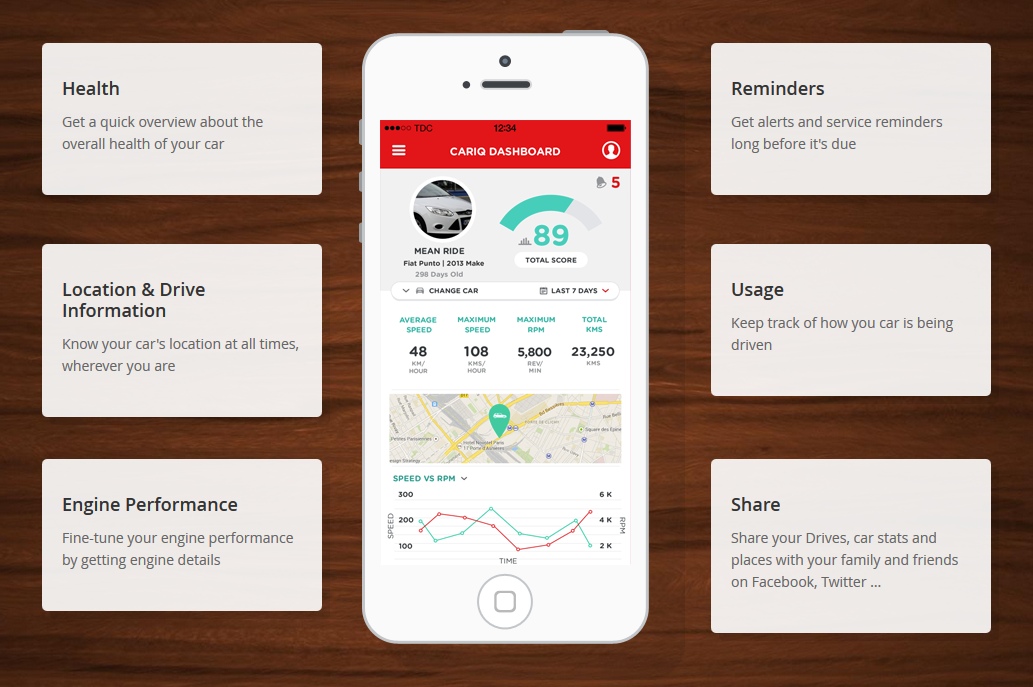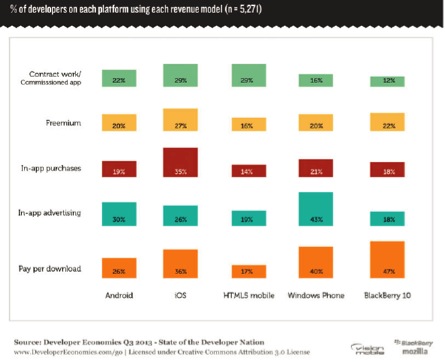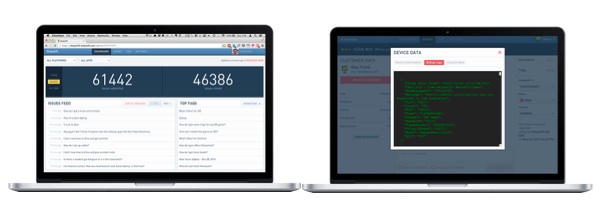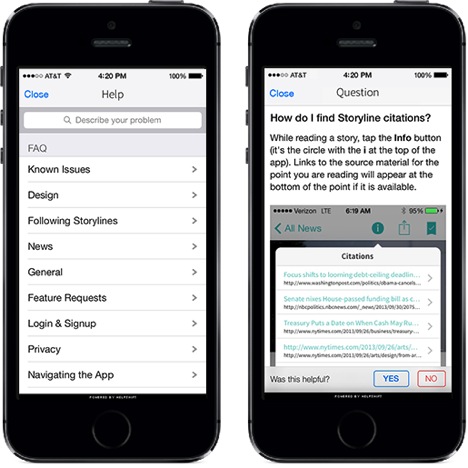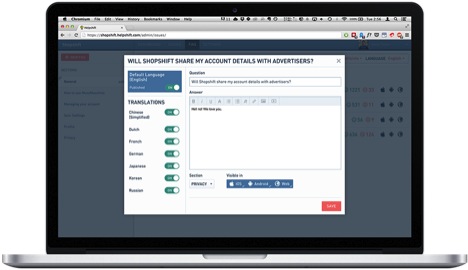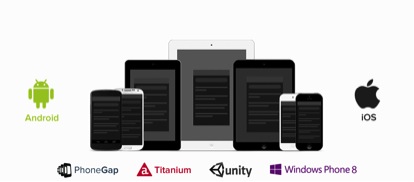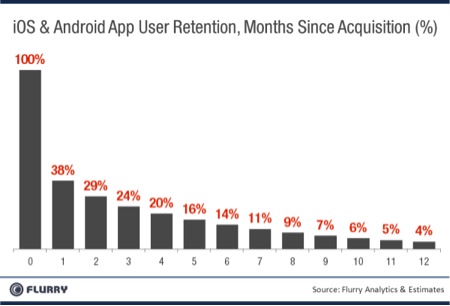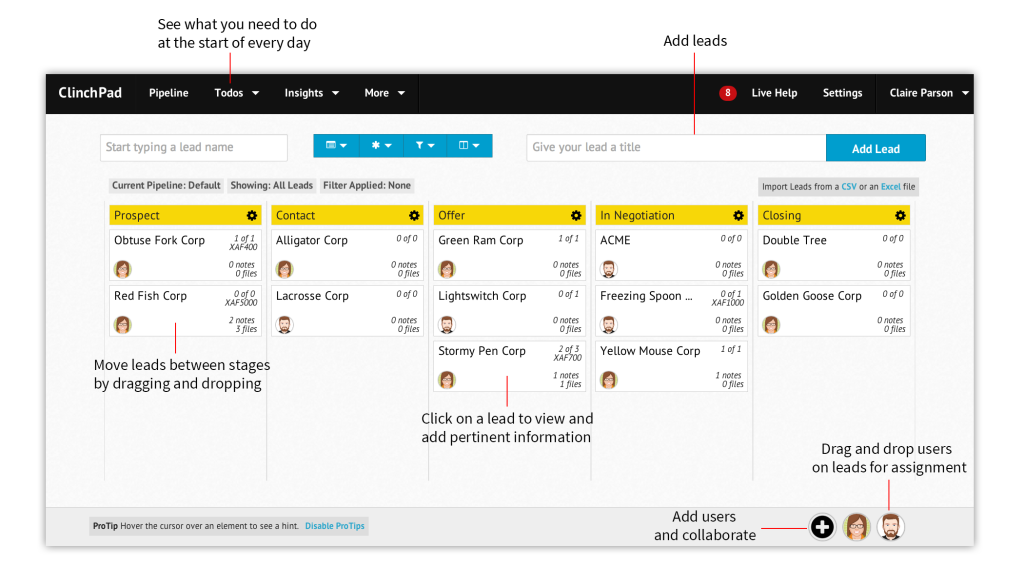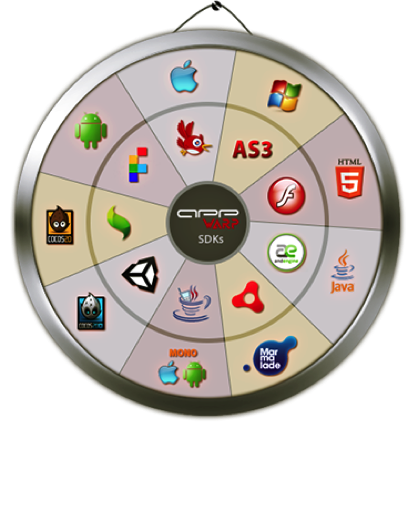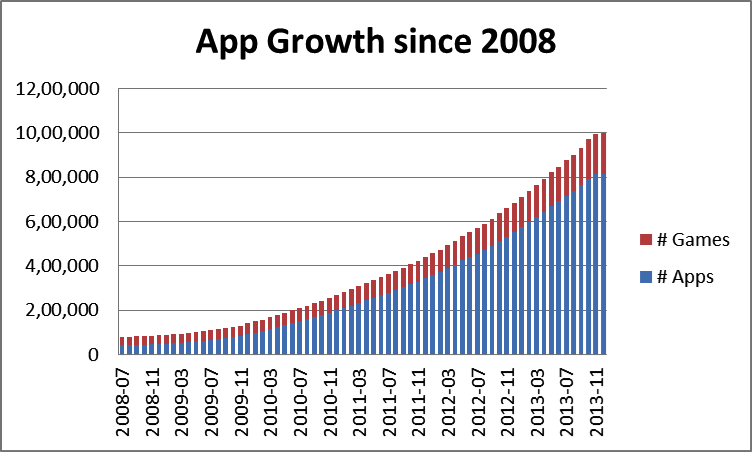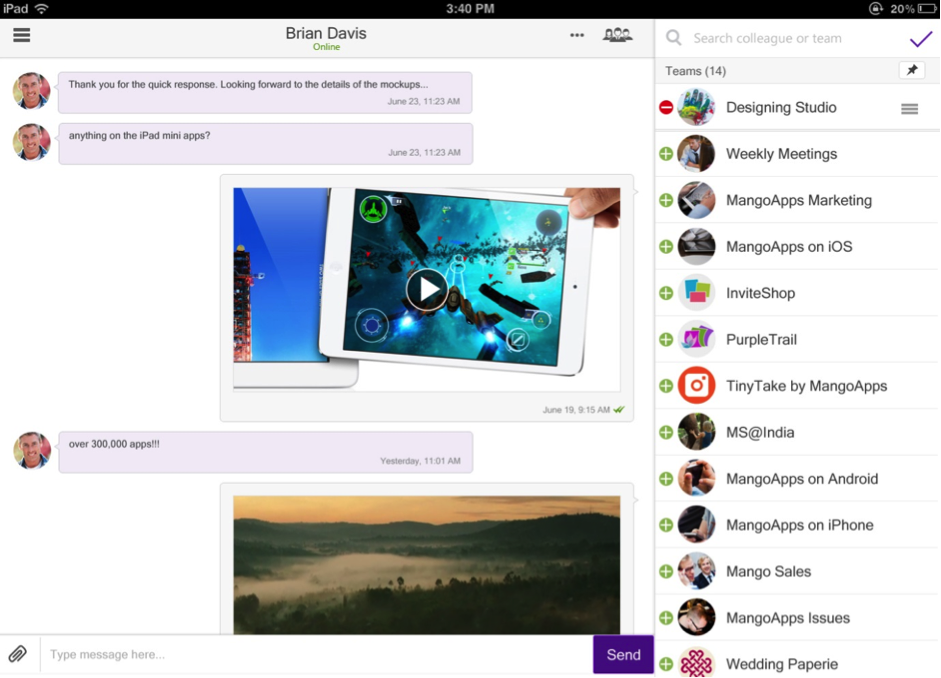If you are a startup or a would-be entrepreneur or just an interested reader, then is there something you can learn from Unmetric? We try to bring you learnings as well as what we see as something special or inspiring. The Learnings themselves are not earth shattering – it’s probably an affirmation of what works – what is special is the environment in which it has been done and the people that did it. Please read on in our series on “Product and Technology Startups – Made in India”.
With the likes of Toyota, Cadillac, Subway, Micromax, ITC Hotels Group, and Under Armouron their customer list, Unmetric truly has a track record that shows a lot of promise and is an inspiration for start ups from India.
|
When we interacted with Lakshmanan Narayan (who many know as ‘Lux’) the co-founder of Unmetric, he spoke at the speed of a train and we had a hard time keeping up with his excitement and passion. But what came out was a fascinating story of a start up that has provided value in the space of Social Media Marketing. The Unmetric team have analyzed, reviewed and reported on the online brand presence of dozens of industry sectors and in the process, covered brands like Walmart, Heineken, Progressive, Nivea, Dove, Intel, Axe – all international brands, just to name a few. Unmetric truly has a track record that shows a lot of promise.
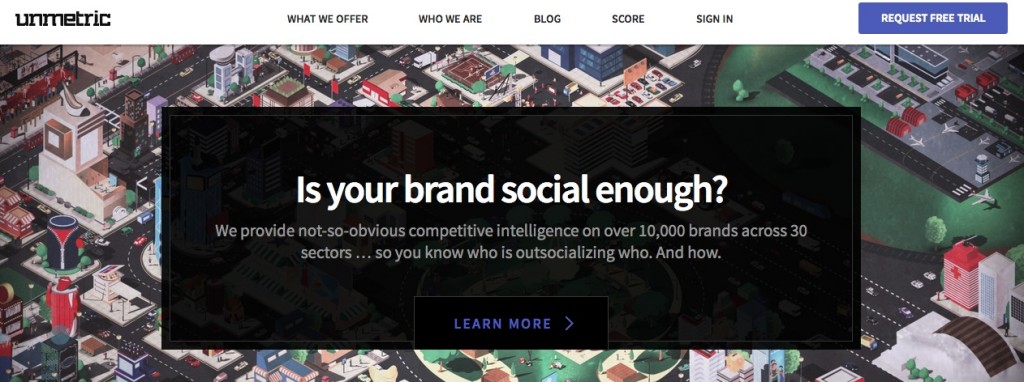
Learning #1 – Creating The Right Value Proposition
Creating ‘The Right Value Proposition’ is the most basic part of any start-up – to be able to identify the right niches and to articulate a service offering that your customers and your organization can identify with. Unmetric has gone a step further, and has created multiple levels of its value proposition. For social media this ranges from industry benchmarks, to helping create a social media strategy to being informed of when a competitor video is going viral.
Unmetric’s ‘Software as a Service’ product is valued by its customers for providing a range of services from implementation to strategy.
Unmetric Services
To understand what Unmetric’s services are, the following example was given to us–
Corporate Social Responsibility forms a big part of Chevrolet’s content strategy on Facebook. In the last month the company promoted its Purple Your Profile campaign with five updates to raise awareness for cancer patients.
Result for Chevrolet: The CSR campaign was a big hit with its fans, the 5 posts were some of the most engaging content Chevrolet posted. It was the most engaging campaign in the auto sector and Chevrolet grew its fanbase faster than the sector average.
The above quote gives you a glimpse of what Unmetric does. It tracks brands on various social networks such as Facebook. It categorizes various brands into sectors based on the industry, consumer presence and nature of the product and it tracks content updates and fan following. It tracks industry measures, such as, the ‘sector average’ mentioned above. Unmetric’s algorithms filter and analyze content quickly from multiple social media platforms so that enterprises can make sense of all the noise and cut to the information that really matters.
Unmetric Services include the following:
Campaign Intelligence:Unmetric provides deep intelligence on social media campaigns.It has the ability to track, collect data on and analyze specific social media campaigns that a customer or their competition may run. The data collection can happen across multiple channels, such as, Facebook, YouTube, Pinterest, Twitter, to name a few.Analysis is down to a specific video or online campaign – if a competitor video is going viral or a brand is doing something exceptional and getting unusually high engagement scores then Unmetric lets you know.
Content Intelligence:Unmetric enables you to mine the content strategies that work. This means, knowing which demographics are being targeted by various brands that matter to you, which topics are hot and getting greater engagement scores, what video lengths are typical, among many others. This helps brands figure out what content strategies to adopt and to quickly respond to audience reaction. The days of creating a newspaper or television campaign that changed every 3 to 6 months are long gone. Social media campaigns may need to change every week if not every day depending on the sector that a customer works in and the demographics of its audiences.
 Unmetric’s work is made more challenging as the ground it is working on is evolving. It has to find answers to many questions – how does one define ‘engagement scores’, is it accepted by the industry, will it change over time, can it be used as a basis of comparing organizations and sectors, are there regulatory concerns, etc.
Unmetric’s work is made more challenging as the ground it is working on is evolving. It has to find answers to many questions – how does one define ‘engagement scores’, is it accepted by the industry, will it change over time, can it be used as a basis of comparing organizations and sectors, are there regulatory concerns, etc.
Sector Benchmarks:As part of this service Unmetric helps customers benchmark their social media performance in terms of Growth, Engagement, Customer Service, and Frequency. It enables organizations to see where they stand against competition or against brands selected by them.Unmetric claims to have developed the ‘first ever sector aware social media benchmark score’ with over variousqualitative and quantitative metrics to rank brands against their competition.
Why is the Social Media Space Important?
This question of importance seems academic, given the extent and usage of social media. However, from an Enterprise budget and marketing spend perspective it still pales with respect to television, print media and other spends. Traditional media organizations have measures for TRPs, advertising reach, spend on television ads, banners in stadiums, etc..Social media measures are at best evolving. However, this space is attracting a tremendous amount of interest from a number of different types of organizations.
The first is obviously the corporates or the brands that are in a constant race to establish themselves on social media. But equally important are organizations that are trying to build their social media marketing expertise.Large existing organizations, such as, Nielsens, GFK, Ipsos, etc. have social media marketing as a clear part of their offerings now and are building it up. So are large and small advertising agencies thathave also entered this space as it is their bread and butter.
But the big game changer is the way this space is getting eyed by the large technology companies. Adobe, Salesforce, Oracle have all acquired fairly substantial sized companies in the last couple of years. Wildfire Interactive, Buddy Media, Vitrue, Radian6 are just a few that were acquired by big software companies. Additionally, by their very nature, LinkedIn, Facebook, Tumblr, Twitter have acquired companies in this space in the last two years.
All of this validatesthe belief the cofounders had in Unmetric. But they didn’t quite start with this idea.
The Competition only Listens but with Unmetric – ‘I See You’
For those of you who have seen the movie Avatar, the theme song is “I See You”. The Na’vi have two versions of the verb “see” and it means to see the physical and beyond. To “understand” or “comprehend”, to see in a spiritual sense with an open mind and heart and see as if encountering it for the very first time.
Unmetric claims their competition is more in to “Listening” and “Engaging” with the community while Unmetric is able to “comprehend”, “understand” and “See” in to the heart of multiple brands and sectors in Social Media. The way Unmetric does this is to use a combination of computer algorithms along with human intelligence. Unmetric has experts that examine information to categorize it in the right way. Unmetric’s roadmap for the future focuses on this in a big way.
To understand this better, consider the example that Unmetric provided of what Under Armour does: “In 2013, Under Armour ran a campaign that launched a new line of clothing with super hero emblemsemblazoned on them to capitalize on the buzz surrounding various Marvel films that were being released. The clothing company posted 6 updates in March and May on their Facebook page to promote this new product line.
Result: The campaign was more than twice as engaging compared to any other campaign by Under Armour in 2013 and the posts received more shares than many other campaigns that had far more posts. The campaign was so successful, it was reintroduced as a cross channel campaign from August to December with the hashtag #UAAlterEgo during which time Under Armour saw higher fan and follower growth.
Unmetric’s algorithms filter and parse every word and phrase on social media to identify trending topics and allow brands to capitalize on relevant conversations.”
Learning #2 – Listen to the Market and understand its needs
Unmetric’scofounders listened to the market to understand its needs and were willing to change and adapt. That is how they completely changed their strategy to what it is today – they started by focusing on Restaurants, Pubs and Spas and then changed course to target Enterprises.
Unmetric – Early Days
The journey from Restaurants, Pubs and Spas to now focusing on Enterprise shows the team’s entrepreneurial spirit and flexibility to adapt. This is a key lesson for ANY startup.
|
Unmetric’s early days were that of a typical start up – self funded, one founder developing his ideas with a lot of spark and no small measure of gumption. Lakshmanan(Lux) had the initial ideafor what would become Unmetric, while at a previous start-up, Vembu Technologies. However, the nature of the business of Vembu and that of social media marketing were culturally very different and Lux realized that if he was going to make any real progress he was going to have to strike out on his own. With the support and blessings from his friends at Vembu, he started with a team of 1 developer, 1 user experience designer and 1 analyst in Feb 2010.
Eyesandfeet.com was launched later that year and focused on helping SMB customers (Restaurants, Pubs and Spas) see what their competitors were doing on Social Media and helping them actually take action to drive ‘feet’ into their establishments. The product was launched in Oct 2010 with Lux spendingtime in New York talking to restaurant owners. He realized that the restaurant and pub owners could hardly take out time to talk to him, as they were harried by their operations, customers and logistics. Even when people gave him time, it was as likely that they would not show up. It was a depressing thought that SMBs were not going to beat a path to their (Eyesandfeet.com) door.
By now, Lux had been talking to multiple other parties – credit card companies, potential investors, some enterprises and there was a lot of feedback that Enterprises needed this information, it was a crying need and they were willing to pay for it.
Lux’s co-founders Kumar Krishnasami and Joseph Varghese came on board by end 2010. They were ex-college mates from IIT-Madras and knew each other since 1989– a strong team with a lot of mutual respect and trust. The co-founders had just joined and the team decided to do a pivot … the business they had signed up for, now had a completely new direction. It would focus on Enterprises. A close knit founding team with mutual trust and respect goes a long way in making such a major direction change successful.
A close knit founding team with mutual trust and respect goes a long way in making such a major direction change successful.
|
The team still didn’t have an office and remained frugal with their expenses. They worked out of their respective homes, the founders wrote code themselves, ‘did windows’ and launched their website (Unmetric) in Aug 2011.
2012 was marked by getting a Series A round from Nexus Venture Partners. 2012 was also when Unmetric focused on Indian customers and started with pilots with brands like Makemytrip, Airtel, and Citibank. 2012 also saw this team move into its new office and the focus switched to marketing and sales in the US. Lux started spending every other month in the US.
When the pivot happened from Eyesandfeet.com to Unmetric.com, Lux and his co-founders decided to do it the right way. Every piece of their service and their product was built not in a lab, but in conversations with advertizing and marketing experts. Every product wireframe was shown to potential customers or experts. The end of 2012 to mid-2013 saw a steady increase in customers. Mid-2013 also saw Unmetric.com close a Series B funding with Jaffco and participation from Nexus Venture Partners and a more permanent move to the US.
As 2014 starts, Unmetric has an organization with 80 plus customers – mostly in the Enterprise space. 50% of these are Brands and another 50% are agencies. Names, such as, CISCO, Toyota, Cadillac, Subway, Aircel and Axis Bank figure on their customer list.
Learning #3 Marketing as a key focus area
Lux and his team have put a lot of focus on marketing from day 1. Marketing is not an afterthought and requires huge emphasis from the start. He believes that most organizations start with trying to get their product right and then work on marketing.
Learning #4 Building High Caliber teams
Lux Narayan, Joseph Varghese and Kumar Krishnasami are all from IIT, Madras. But that is just the beginning of their team. They have gone to great lengths to hire the best from anywhere in the world and built a collaborative, high performance team. It really doesn’t matter where the people are – much easier said than done.
Orthogonal Hiring
Lux calls it Orthogonal Hiring – what it means is not necessarily hiring people for their work experience but being able to identify people from alternate verticals who may have the capability to be outstanding in a role that Unmetric needs.
Lux took great pains to hire the right people. He met his Director Sales – APAC Region in a PTA meeting where he realized that she could sell anything to anyone. Before Lux hired his head of Content Management, Peter Claridge, (and had him relocate from England to India) he took the trouble to read all of his blog posts. Peter had not done such a role earlier but Lux found a tone of voice that he wanted for the company. Lux went to great effort to get through 125 CVs (after shortlisting) in order to pick Rick Liebling, his Head of Marketing. Jay Rampuria, the Head of Sales, and someone with years of experience at Nielsen and other companies, had to be convinced that Unmetric was a better bet than some leading social networksand agency holding companies wooing him at the time.
Family has also been taken in with Unmetric, its people and its potential – with Lux’s wife, an accomplished ex-banker and technology product executive (and classmate from IIM Calcutta)having jumped in to lead Finance and HR, and his cousin, someone who has been with the company since the very first Eyes And Feet days, choosing to take charge of Unmetric’s Operations and Client Relations over more lucrative and mainstream offers that came his way.
Of course, getting the right set of co-founders that had competence and trust amongst them goes a long way. A month after the co-founders joined in early 2011 the business did a “pivot” – the entire business changed direction.
But a high performance team is not just your employees; it is also your partners and third party organizations that you work with. An excellent example is how Unmetric creates best in class content.
Content Marketing is at the heart of Unmetric’s reach to companies around the world. Peter Claridge, with a team of 5 in Chennai produces up to 30 pieces of content every month. But the team is not just in Chennai, it’s a truly international team leveraging strengths from around the world.
The story gets prepared in Chennai, the creative infographics are produced by a designer in Spain, the PR company that packages it is based in San Francisco and it may get published in media based on the East Coast of US, e.g., in the Wall Street Journal Blogs. The content itself is relevant to local events globally – NBA statistics, Thanksgiving Day, Valentines Day, etc.. This is then followed up by sales people based in Chicago or New York with the brands that may have figured in the content.
Learning #5 – UI Design, UI Design, UI Design
Product Start ups MUST ensure that their UI is best in class. Start ups from India usually work on UI as an afterthought, whereas Unmetric worked this into their Product and organization strategy from Day 1.
 Lux Narayan says “Even at a time when we were bootstrapping the company, we paid top dollar (rupee) to ensure that we had a top class UI designer from Day 1. … Interestingly, that amazingly talented designer who was freelancing with us is now a full-time member of the team, having chosen Unmetric over many other amazing companies that tried to hire him.”
Lux Narayan says “Even at a time when we were bootstrapping the company, we paid top dollar (rupee) to ensure that we had a top class UI designer from Day 1. … Interestingly, that amazingly talented designer who was freelancing with us is now a full-time member of the team, having chosen Unmetric over many other amazing companies that tried to hire him.”
A “thinking designer” is key and this manifests itself in many ways in Unmetric’s user experience. In fact, a focus on design is also visible in all external facing content from Unmetric – be it their reports or their website or their blogs. Some samples are included below.
Last but Not Least
Learning #6 – Role of founder(s) in a successful start up
There is often a debate on what role a founder (or founders) plays in a successful start up. Should he be an astute investor, a great engineer, a marketing whiz, a visionary, or an operations person. Irrespective of who wins that debate it cannot be denied that this small group of founders creates and sustains the standard for excellence, the customer focus, the courage, the financial decision making, the cultural tone, etc. that form the ethos of success.
There is no doubt that Unmetric is a team effort of experts, now based in many parts of the world. But behind it is the mind, heart and passion of Lux who has pursued an idea, listened to customers, changed course, got together diverse people that can work and deliver as a team, created operational excellence, focused on marketing and much more – no small feat.
For entrepreneurs in the making who are looking to start up a business… it is critical to see the capability of your founding team to see if you have the right mix and capability, skill and gumption to take your start up all the way.
Acknowledge
Last but not least, we would like to acknowledge the openness and speed with which Lux, with the help of Peter, has shared Unmetric’s business ideas and thoughts for the rest of the Start Up community. They have a lot of interesting challenges ahead and we wish them the very best for 2014.
 Product Nation interviewed Kamal Mansharamani and Atul Bhatia, founders of workXmate – a cloud based ERP & CRM solution designed for SMEs. During the discussion, they share their insights on how technology and external environment changes are creating favorable opportunities for tech entrepreneurs to offer products to the market. Read on…
Product Nation interviewed Kamal Mansharamani and Atul Bhatia, founders of workXmate – a cloud based ERP & CRM solution designed for SMEs. During the discussion, they share their insights on how technology and external environment changes are creating favorable opportunities for tech entrepreneurs to offer products to the market. Read on…



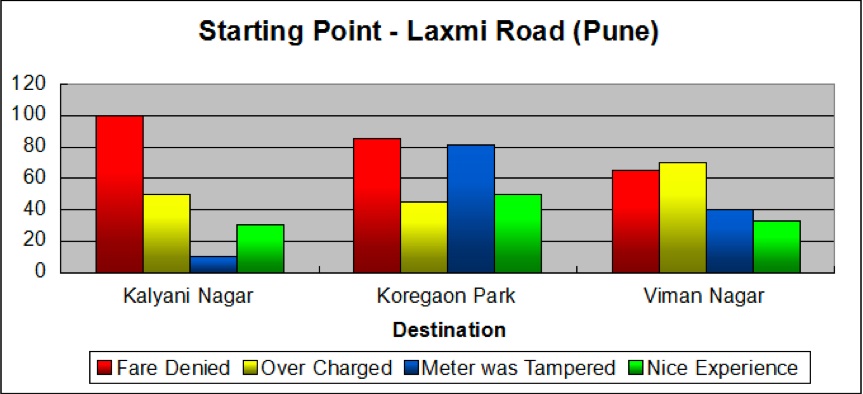
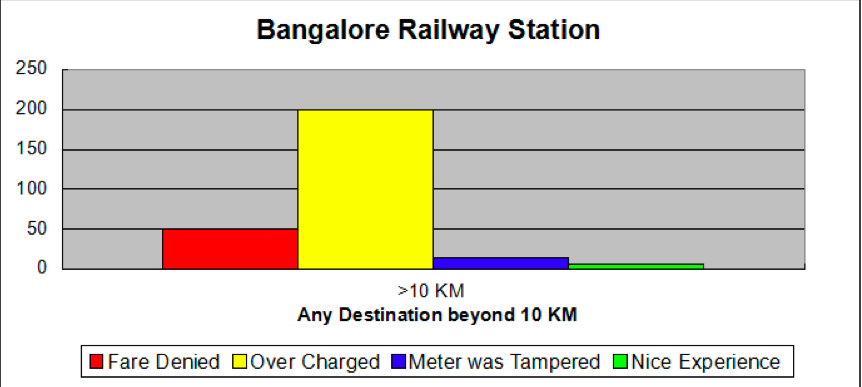
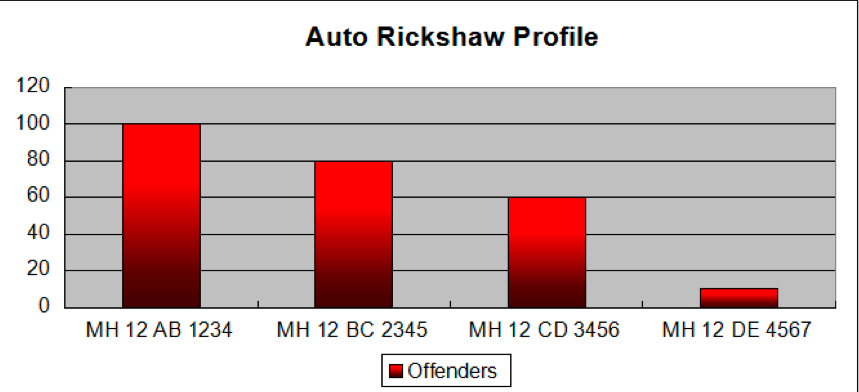

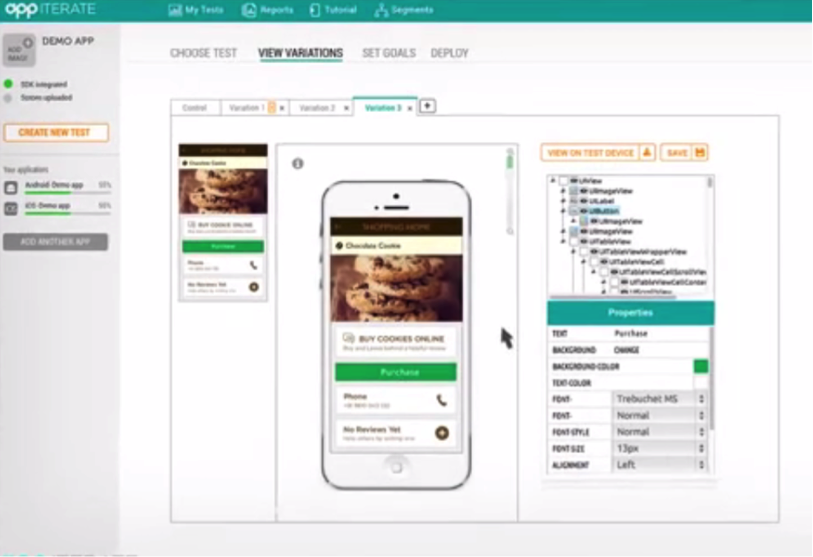




 [Airwoot]: Airwoot uses sophisticated natural language processing and machine learning techniques to pick out the actionable conversations in real-time. It automatically identify people who need engagement in real-time. The more brands and marketers use it the smarter it gets. Airwoot captures your social etiquette and creates a social priority inbox for you.
[Airwoot]: Airwoot uses sophisticated natural language processing and machine learning techniques to pick out the actionable conversations in real-time. It automatically identify people who need engagement in real-time. The more brands and marketers use it the smarter it gets. Airwoot captures your social etiquette and creates a social priority inbox for you.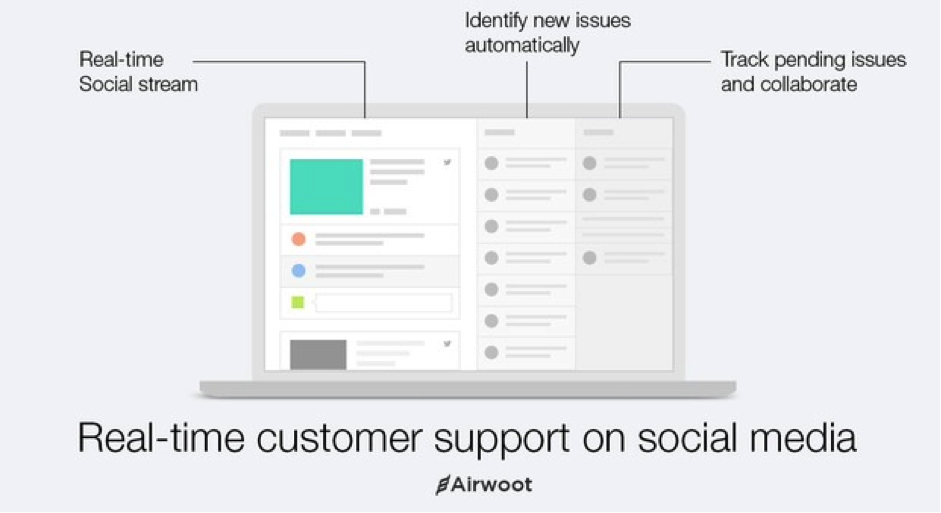 What kind of analytics support does your tool provide?
What kind of analytics support does your tool provide? K7 Computing is a leading provider of information security solutions that protect individuals and organizations from IT threats like viruses, malware and hacker attacks. The company, which builds world-class products and competes with global market leaders like McAfee and Symantec, first achieved major success in a foreign market like Japan, where it has a near 28% market share. The Chennai-based firm has now shifted focus to India and is poised to repeat its triumph in the domestic market.
K7 Computing is a leading provider of information security solutions that protect individuals and organizations from IT threats like viruses, malware and hacker attacks. The company, which builds world-class products and competes with global market leaders like McAfee and Symantec, first achieved major success in a foreign market like Japan, where it has a near 28% market share. The Chennai-based firm has now shifted focus to India and is poised to repeat its triumph in the domestic market. When I passed out of class x in 1984-85, I joined a computer programming course during my summer vacation. It was an occurrence that changed my life. I enjoyed programming so much that I decided this is what I wanted to do. System level assembly languages are what interested me most. While both software and hardware were equally exciting, I decided to get into antivirus solutions – more as a challenge to help people facing virus attacks.
When I passed out of class x in 1984-85, I joined a computer programming course during my summer vacation. It was an occurrence that changed my life. I enjoyed programming so much that I decided this is what I wanted to do. System level assembly languages are what interested me most. While both software and hardware were equally exciting, I decided to get into antivirus solutions – more as a challenge to help people facing virus attacks.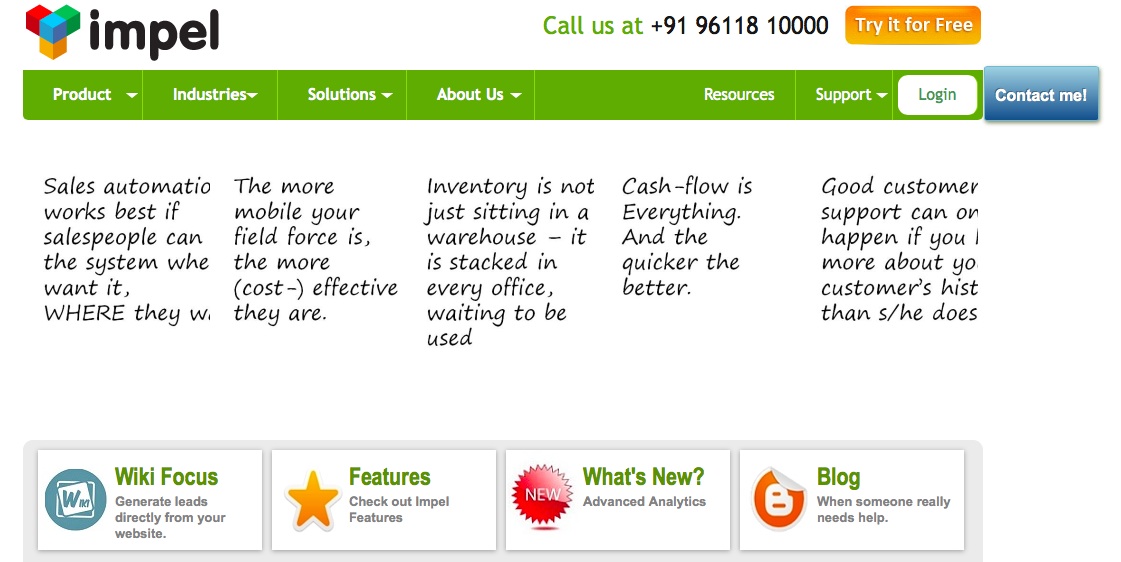


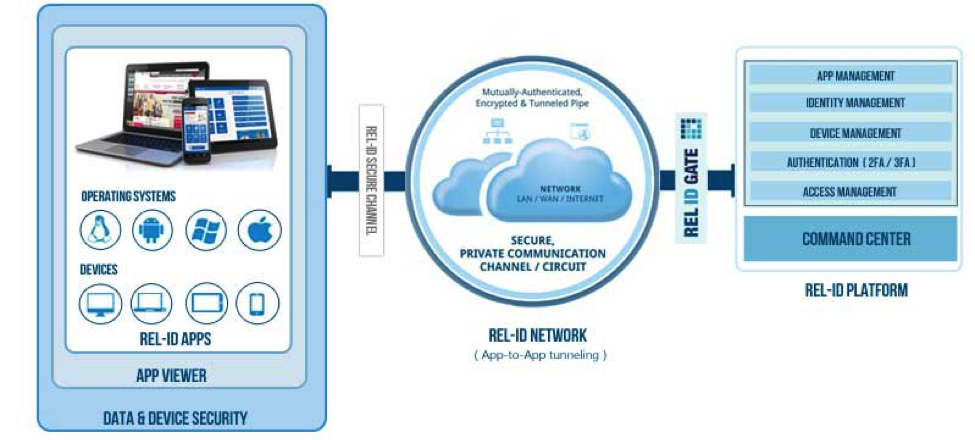
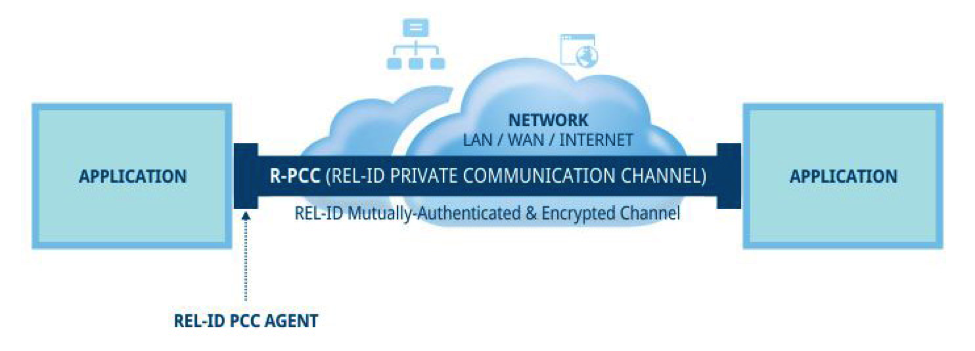
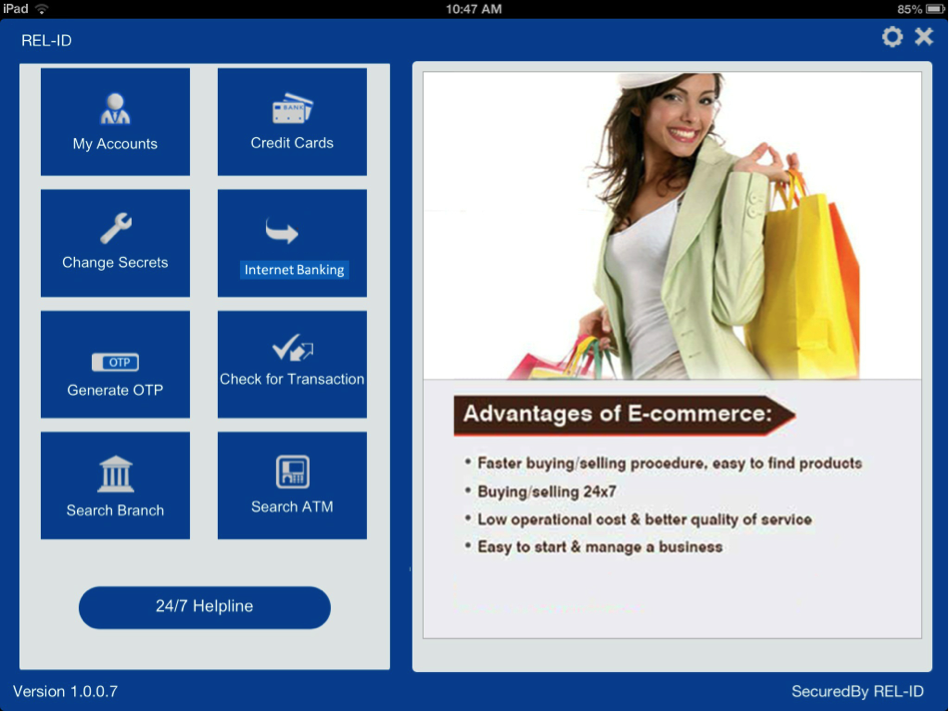

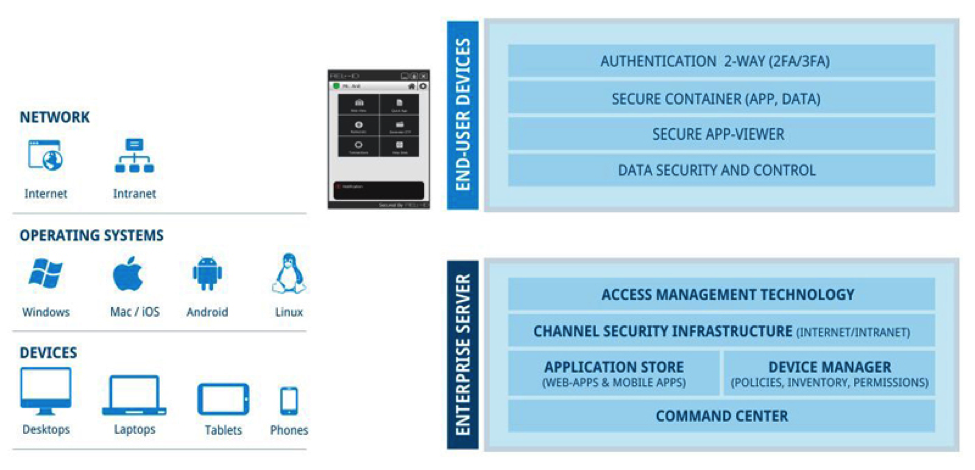



 It was the experience of my purchase of Hyundai i20 a few years ago, which made me aware of an acute problem. When I made the purchase, I knew what car, make, and model I wanted to buy. I knew what mileage to expect, I read reviews, and before I went to the dealer, the decision was already made. There was so much information available to help me buy. But I was not ready for what happened after the purchase. I had to set manual service reminders, I was not aware whether my car was performing as expected. I was apprehensive when I left my new ride parked for hours at open parking places. I just wished, – what if my car was a smart car and managed this for me? Wouldn’t it be cool, if my car could detect problems, remind me of service alerts, or tell me its location even if I was not in the car. That lead me to first investigate mechanical add-on to get this data until I realised that cars have computers, and those computers can talk. I can get data on performance, condition, and even potential unseen problems. That was it. I knew I had to harness this data to convert into meaningful insights.
It was the experience of my purchase of Hyundai i20 a few years ago, which made me aware of an acute problem. When I made the purchase, I knew what car, make, and model I wanted to buy. I knew what mileage to expect, I read reviews, and before I went to the dealer, the decision was already made. There was so much information available to help me buy. But I was not ready for what happened after the purchase. I had to set manual service reminders, I was not aware whether my car was performing as expected. I was apprehensive when I left my new ride parked for hours at open parking places. I just wished, – what if my car was a smart car and managed this for me? Wouldn’t it be cool, if my car could detect problems, remind me of service alerts, or tell me its location even if I was not in the car. That lead me to first investigate mechanical add-on to get this data until I realised that cars have computers, and those computers can talk. I can get data on performance, condition, and even potential unseen problems. That was it. I knew I had to harness this data to convert into meaningful insights.


